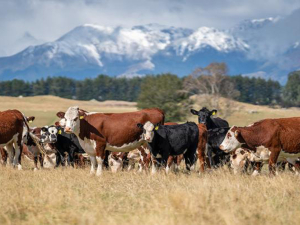The mood among farmers is cautiously optimistic this season according to DairyNZ’s new general manager farm performance.
Sarah Speight took over the role in July this year, having worked in the agricultural sector for over 25 years.
Speight, a farmer herself, says it has been an interesting winter for those in the paddocks.
With a drought that lasted through to autumn, followed by the current wet weather, compounded with cost increases and labour shortages, Speight says farmers have been hit “pretty hard”.
She says farmers have been faring well despite these issues.
“Most of them are cautiously optimistic,” she told Dairy News.
However, the wet weather has been “tempering everybody’s optimism”.
“I think most farmers are pretty well prepared for the weather as best as they can be,” Speight says.
She adds that DairyNZ has resources available on its website for farmers who need a refresher on how to deal with the bad weather and she says there are DairyNZ team members available for those who are concerned about how to manage.
“We’re [DairyNZ] doing the bits we can to try and help out but we’re very aware that this is the time of year when people’s heads are down and are just [trying to get through] as best they can," Speight says.
One positive, Speight says, is that calving rates in terms of numbers have been good, but that too has its downsides with farmers impacted by labour shortages.
“It just means that they’ll be keeping longer hours, working harder,” she says. “Particularly with wet weather, there’s all this management farmers need to do in order to avoid pasture damage so… it just means farmers are working longer hours.”
“So, the work is still being done, the milk is still going into the vat, the cows are still being well cared for, but it just means there are some of our farmers who are working a lot longer hours than we would like to see them working at this time of the year.”
Speight says that while farmers are working longer hours, she does hope that they are taking into account that they will require some downtime when the season starts to wind down.


















